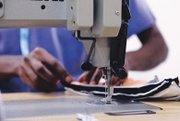Wildlife Works Eco Brand Gives Consumers Chance to Offset Carbon Footprint
San Francisco–based Wildlife Works, which makes its eco-brand casual apparel in a small African factory, is giving shoppers the opportunity to save forests and help poor communities.
It is also taking a modern approach to retail by setting up a shop on Facebook as well as launching an e-commerce website at www.wildlifeworks.com, which will be the only locations selling Wildlife Works’ label of carbon-neutral men’s, women’s and children’s tops. Wildlife Works fashions are designed by Joyce Hu, the label’s creative director. They retail from $22 for a boys’ T-shirt to $75 for a zip-up hoodie.
The label is made of organic cotton and manufactured at a factory in rural Kenya that employs more than 38 people. It was built by Mike Korchinsky, Wildlife Works’ founder and chief executive, whose mission when the label launched in 1997 was to provide consumer offsets by preserving forests and employing people around Kenyan games preserves so they wouldn’t have to hunt exotic game to make a living. Part of Wildlife Works’ initiative, called the reducing emissions from deforestation and degradation initiative, protects more than 500,000 acres of Kenyan forest.
The Facebook store and the website also offer Wildlife Works’ market for carbon credits. Consumers and businesses also can offset their carbon footprint by investing in clean technology and practices.
In March, Wildlife Works announced a partnership with sportswear label Puma AG to produce clothing at its Kenyan factory. In addition, Wildlife Works announced a deal with Puma’s parent brand, PPR SA, where the luxury sportswear brand would purchase 98,729 tons of carbon credits from Wildlife Works’ Kenyan REDD project.
In the past, Wildlife Works’ clothes have been worn by celebrities such as Paris Hilton and by actors on the television series “The O.C.” But the brand went on hiatus in 2008 to change its retail business plan to rely wholly on e-commerce, according to Gerald Prolman, director of business development. However, selling to boutiques again is a future option, Prolman said.—Andrew Asch























